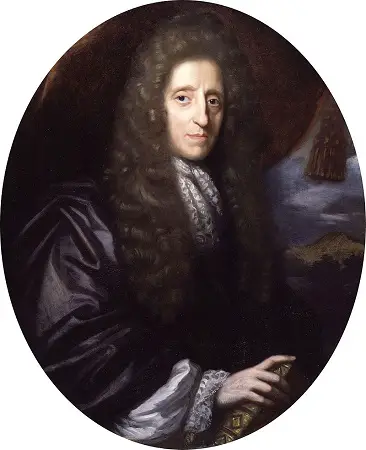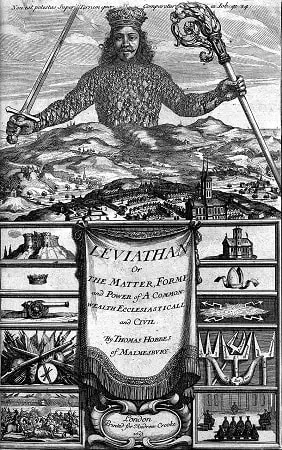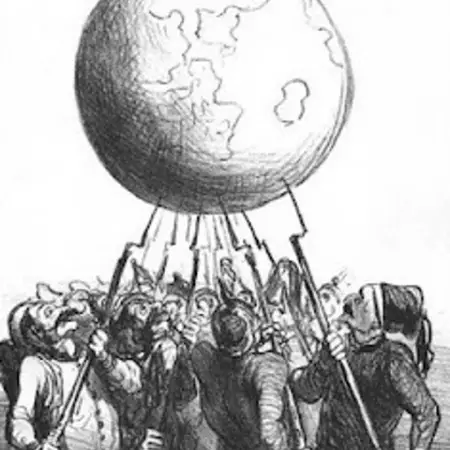The concept of Enlightenment, which is based on freedom of speech, equality, religious tolerance, and press freedom, inspired the American revolution. The Americans were looking to enjoy these rights leading them to rebel against the British.
The English government consisted of branches including legislative, executive, and judicial departments and with the separation of these branches, there was no absolute control by anyone.
It provided an opportunity for the American citizens to express their opinions on the government’s decisions. This gave the people great power and freedom.
The Principal author of the Declaration of Independence, Thomas Jefferson, wrote of Americans’ natural rights as “life, liberty, and the pursuit of happiness.” These were the ideas inspired by Enlightenment that helped in the American Revolution.
The Spirit of the Laws talked about a balance of power, giving citizens more freedom. This law was translated into English for the American Colonists to read and adopt the Enlightenment principles.
Colonists in America desired independence. They believed that England should not be allowed to dominate them from afar.
The following are a handful of the Enlightenment thinkers’ significant concepts that had the most impact:
What was the impact of the Enlightenment on the American Revolution?
Content
Enlightenment values such as freedom of speech, equality, freedom of the press, and religious tolerance impacted several of the founders of the American Revolution.
Because American colonists lacked these rights, they revolted against England for independence.
What were the Enlightenment’s three main ideas?
The Enlightenment, often known as the ‘Age of Enlightenment,’ was an intellectual movement that emphasized reason, individualism, and skepticism in the late 17th and early 18th centuries.
What impact did the Enlightenment have?
The Enlightenment aided in the fight against ecclesiastical excesses, the establishment of science as a source of information, and the defense of human rights against tyranny.
It also brought us modern education, medicine, republics, and representative democracy, among other things.
Natural Rights

Natural rights were the cornerstone of France’s Declaration of the Rights of Man, a human rights manifesto written during the French Revolution. The famous ideas ‘ life, liberty, and happiness’ were influenced by John Locke.
Britain continued to become more corrupted and against republicanism. It became a threat to the Americans’ established freedom. Hence, the Americans’ interest in these republican ideas caused the American Revolution.
In 1848, Leopold von Ranke, a German historian, said that American republicanism influenced the growth of European liberalism.
The North Americans established a new power by announcing English constitutionalism. They created a new republic based on natural rights. These ideas spread quickly as they had a proper concrete expression.
This caused republicanism to enter the Romanic realm. Before this, Europeans lived with the belief that monarchy best served the nation’s interests. Later, the idea that the country should govern itself began to spread.
Everything revolved around the king in the past, but later, they believed that the power should be derived from below. These two concepts collided, and the fight between them dictates the path of the modern world.
On June 12, 1776, the Virginia Declaration of Rights, taken on by the Virginia Convention of Delegates, states: “All men are equally free and independent and have certain inherent rights. Namely, the enjoyment of life and liberty, acquiring and possessing property, and pursuing and attaining happiness and safety.”
On July 4, 1776, the Second Continental Congress adopted the United States Declaration of Independence.
Social Contract

The social contract notion gave a reason to overthrow their monarchs and influenced both the American and French Revolutions.
This principle encouraged the American Constitution to hold elections and remove a president unable to perform their duties.
The administrator allowed the emphasis on American republicanism, the abolition of the aristocracy, and the fight against corruption. It signified the coming together of classical and English republicanisms.
The government that operated through sponsors, parties, and standing armies established churches and promoted monied interests.
However, the formulation of this concept was hampered by the desire for readily available paper credit joints in settlement colonies.
J.G.A. Pocock described America’s scholarly sources as follows:
“The authoritative literature of this culture was formed by the Whig canon and the neo-Harringtonians, John Milton, James Harrington, Sidney, Trenchard, Gordon, Bolingbroke, and the Greek-Roman and Renaissance masters of the tradition as far as Montesquieu. Its values and concepts were those we have grown familiar with: a civic and patriot ideal in which the personality was founded on property, perfected in citizenship but perpetually threatened by.”
Balance of Power

The American Revolution offered a space for the separation of power as well. The founders of the United States of America built three branches of government while creating their new country.
These branches were the legislative, executive, and judicial branches. Checks and balances were the terms for this system.
European political thinkers such as Montaigne, John Locke, and Jean Jacques Rousseau derived democratic ideas from American Indian governmental structures. European travelers brought these, and these gave rise to the American Enlightenment.
In Native America, concepts of freedom and modern democratic principles were created and gained permanency.
An intellectual shift occurred between 1714 and 1818. It transformed the British Colonies of America into a leader in a variety of fields. They consisted of moral philosophy, educational reform, religious revival, industrial technology, science, and political philosophy.
In America, there was an agreement on a governmental framework based on the “pursuit of pleasure.”
Many colleges such as Yale College, William and Mary College, College of New Jersey (now Princeton University), and Harvard University courses have replaced theology with a non-denominational moral philosophy.
Natural philosophy (science), modern astronomy, and mathematics were added to the curriculum.
Separation of Church and State

Religion was very important during the time of monarchies and was used as a form of control. Both the founders of the United States of America and the French Revolution were aware of this. They made efforts to ensure it did not happen again.
The Bill of Rights in the United States guarantees religious liberty. The government safeguarded people’s religious freedom. All religions were granted civil and political rights in France.
Benjamin Franklin, Thomas Jefferson, James Madison, and George Washington were the Enlightened Founding Fathers. They won religious liberty for minorities and envisioned the United States as a place where people of various religions could live in peace.
“Conscience is the most sacrosanct of all property,” James Madison said in 1792, summarizing this principle.
The period from 1775 to 1818 was a shift away from organized religion toward religious tolerance. The new Connecticut Constitution approved the American Enlightenment in 1818.
The 180-year-old “Standing Order” and the Connecticut Charter of 1662, standing for 180 years prior, approved by the Fundamental Orders of Connecticut, were invalidated by the new constitution.
The Congregational church was stopped and allowed religious freedom.
Conclusion
The Enlightenment was a cultural movement as much as it was an intellectual movement. It is based on reason over superstition and science over blind faith.
Similarly, Enlightenment intellectuals applied the power of the press to challenge conventional knowledge. They spread ideas about openness and religious tolerance throughout Europe and the Americas.
The American Enlightenment is believed to have taken place in the eighteenth century. And the concept was influenced in the United States by the British and French Enlightenments.
This era shifted adherence away from absolute authority toward human nature, religion, and politics.
Thomas Paine, James Madison, Thomas Jefferson, John Adams, and Benjamin Franklin adopted revolutionary ideas such as scientific rationality, religious toleration, and experimental political organization. These ideas would lead to effective results in the development of ineffective nations.
In early forms of republican thinking, people focused on the importance of promoting virtue, enlightened leadership, and community. Others claimed the natural rights of man to be in the anti-authoritarian doctrine of liberalism.
American Enlightenment consisted of principles of Deism, liberalism, republicanism, conservatism, toleration, and scientific progress.
Most of these principles were inspired by European Enlightenments and molded according to American needs.
